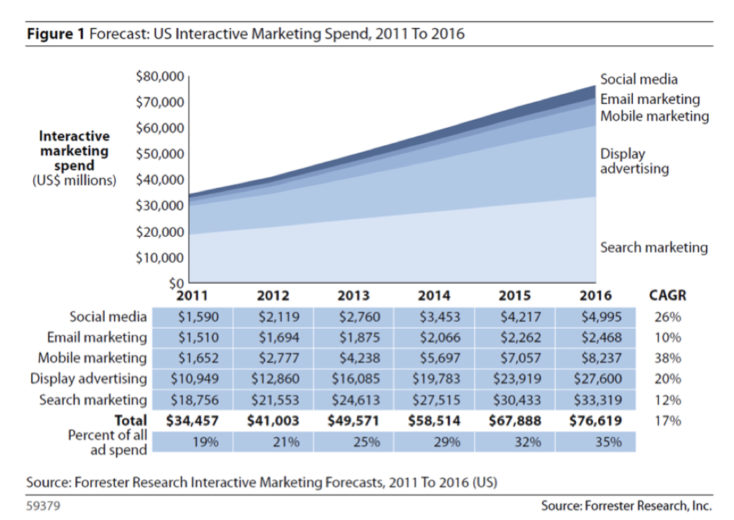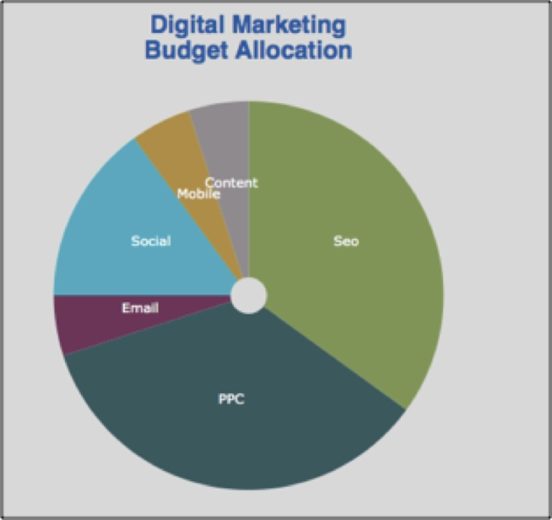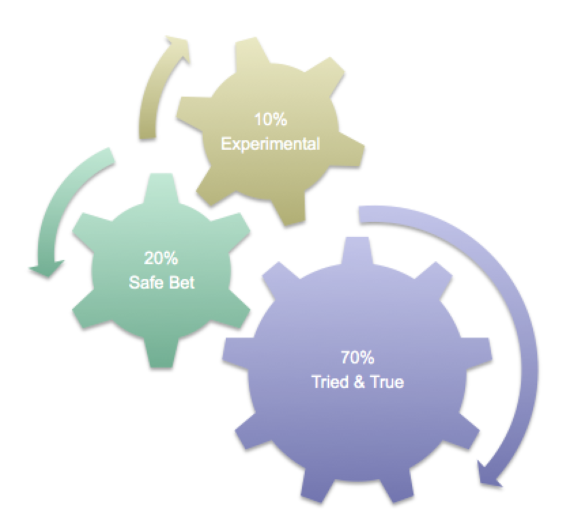It’s that time of year when we as advertisers reflect back on the last 12 months and evaluate what marketing programs worked great, which did not fair as well, and start to plan marketing budgets for the new year. But how do you know if you have the right budgets for your industry and each marketing channel?
You may ask yourself these questions:
- Did you allow budget to test new channels?
- Did you budget enough or maybe too much?
- Were actual results in line with projections?
These are all questions that have probably plagued many marketing directors, CMOs and even CEOs at some point in time. I wish had the answer but in reality, there is no magic bullet because each business is unique. However, what I can provide you with is a digital market share analysis, insight into what channels are expected to grow over the next few years and a starting point for how to budget for business-to-business and business-to-consumer companies.
2014 Digital Market Share By U.S. Search Engines
According to the October 2014 comScore report based on US desktop search market place, Google holds 67% of market share, followed by Microsoft sites with 19.5% and Yahoo Sites with 10.3%. Ask network was at 1.9% and AOL with 1.2%. Microsoft and Yahoo saw slight increase increases in market share month over month.
Most of these figures come as no surprise. Google continues to hold the majority of the market share in the digital space but as you can see, Microsoft (Bing) and Yahoo also hold a pretty big chunk too (29.8%). If you’re only running ads on Google you could be missing out on almost 30% of U.S. searches! So now that we’ve seen how the market share plays out, how are companies budgeting for digital marketing and which marketing channels are expected to grow over the next few years?
The Future – Digital Marketing Channel Projections
According to a recent Gartner survey released in November, Digital Marketing Budgets are expected to increase on average by 17%.
“Marketers are investing in the customer experience to drive business advantage and profitable revenue growth, according to a survey of marketing executives by Gartner, Inc. The survey found that marketing budgets remained healthy in 2014, with, on average, companies spending 10.2 percent of their annual 2014 revenue on overall marketing activities, with 50 percent of companies planning an increase in 2015. Digital marketing spending averaged one-quarter of the marketing budget in 2014. The survey found that of the 51 percent of companies who plan to increase their digital marketing budget in 2015, the average increase will be 17 percent.” Gartner, Inc.
Digital Marketing is expected to continue strong performance as we roll into 2015. According to the Gartner survey, the larger the company, the larger the percentage of growth. Brace yourselves: Digital marketing will continue to grow!
Below is a projection of growth by channel from 2011 – 2016 reported by Forrester Research, Inc in regards to US Interactive Marketing Spend. As you can see, mobile is projected to see the largest amount of growth over the next couple of years – 38%. We have already started to see this trend in 2014 and it appears to only be growing. If you do not have a mobile strategy, it’s time to start thinking about how to compete in your vertical.
Digital Marketing Budgets for B2C
As I mentioned above, budget is dependent on each company’s unique goals, initiatives and financial stability. There are lots of factors that fall into play. While doing some research I found a high-level rule of thumb for Business-to-Consumer is a digital marketing budget calculated at 40% of total marketing budget, that is based on 15% of total annual revenue.
For example, if your business is a Business-to-Consumer company that generates $2,000,000 in annual revenue. Your total annual marketing budget in this example would be $300,000 (15%). 40% of your marketing budget would go to Digital Marketing – $120,000 annual budget.
Digital Marketing Budgets for B2B
Business to Business is a different animal compared to Business-to-Consumer. Therefore the digital marketing budget should also be accounted for differently. A high-level budgeting methodology for Business-to-Business companies includes allocating 5% of total annual revenue to total marketing budget, with 40% of that being allocated to Digital Marketing.
For example, if your Business-to-Business company generates $2,000,000 in annual revenue. Your total annual marketing budget in this example would be $100,000 (5%). 40% of your total marketing budget would go to Digital Marketing – $40,000 annual budget.
Both of these examples are high level of how to budget for different markets. These will vary for each business but at least provides a starting off point that has worked for other business in these verticals.
Digital Marketing Budget Allocation – 70/20/10 Rule
Now that you’ve figured how much you should spend, next you need to figure out how much to devote to each marketing channel.
Creating the perfect balance between budgeting for what’s working and allowing additional funds to expand for growth can be tough. Stacie Levy at Kenshoo wrote an article for ChiefMarketer.com that helps find balance for allocating marketing budget across channels using the 70/20/10 rule. This method allows you to allocate 70% of your budget to “tried and true” methods, 20% to channels that have a “high-likelihood” of big returns and 10% for more experimental channels. This distribution of budget creates a balance between what you know performs and allows room for growth.
Now just because you’ve allocated the budgets in this format doesn’t mean you should set it and forget it. Ongoing evaluation and adjustment of budget allocation between channels should also be part of the process. As performance in the 20%-10% channels starts to perform to the levels of the tried and true 70%, allow yourself to adjust the budgets to provide channels that perform well with more room for growth and continue to explore other channels. This should give your digital marketing program a nice balance of stability and growth in the digital space.
Closing Thoughts
Determining a digital marketing budget is a case-by-case basis and should be thought of as a marathon and not a sprint. The digital marketing space is going to continue to grow tremendously over the next few years – especially mobile – so make sure you do your research. Allow room in your digital budget for methods that are proven to work, and room to test other promising and experimental markets to keep your business ahead of the game.
What other methods have you found helpful for budgeting for digital marketing?






